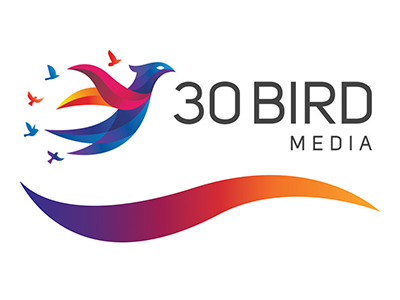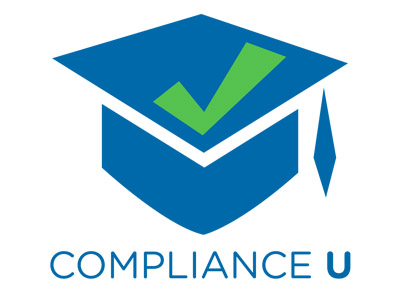 |
Indoor Air Quality |
1.00 |
This course covers indoor air quality (IAQ) and useful associated skills. You will learn the difference between sick building syndrome and building-related illness, as well as the conditions that cause these illnesses. You will also learn model IAQ policies and practices. |
 |
Food Allergy Basics in Early Childhood (CDA 1 and 5) |
3.00 |
Welcome to Food Allergy Basics in Early Childhood. This course is focused on ways to prevent accidental exposure to foods that can cause an allergic reaction. You will be able to describe ways to prevent accidental exposure to foods that cause an allergic reaction. You will also be able to demonstrate how to read a food label to reduce the risk of accidental exposure to foods that can cause an allergic reaction. In addition, you will learn how to use a Food Allergy and Anaphylaxis Emergency Care Plan to care for a child with a food allergy and identify the symptoms and triggers of food allergies. This course is also designed to be part of a Child Development Associate (CDA) Credential™ curriculum. It covers Subject Area 1: Planning a Safe, Healthy Environment to Invite Learning and Subject Area 5: Managing an Effective Program Operation. |
 , ,  |
Dance for Joy: Confident, Calm, and Compassionate |
1.00 |
This module from Dance for Joy will provide teachers with resources and activities that can be used and modified to support physical, mental, social, and emotional development in young children.
This course covers 5 activities: Tickle the Sky, Tapping, Every Little Cell, We are One, Scoop up the Universe. |
 |
Conducting Meetings: Conflicts, Climates, and Difficult Personalities (Instructor Guide) |
0.50 |
In this course you will learn to: identify the main causes of conflict, the ways to resolve conflict in meetings, and the common difficult personality types in meetings, and identify the characteristics of a positive and negative climate, and the steps to build a positive climate when communicating.
This Instructor's Edition of this course includes notes and suggestions to assist you in presenting the material, whether in an in-person classroom setting, or as an instructor-led online or distance-learning course. It also provides you with the answers to questions found in mid-lesson activities, as well as in the quiz that concludes the course. |
 |
Connection Planning in Long-Term Care |
1.00 |
This module includes training for staff and providers in the importance of social connection and practical strategies learners can use to promote social connectedness in long-term care. The module explains how to implement Connection Planning, a brief, person-centered behavioral intervention for developing resident care plans that address social connection. Connection Planning includes evidence-informed, practical strategies to promote meaningful social connection among residents in long-term care. |
 |
Understanding the Freedom of Information Act (FOIA) in Schools |
1.25 |
This course includes comprehensive information about the Freedom of Information Act (FOIA) and its implications in educational institutions. It includes FOIA basics, compliance requirements, best practices, and case studies relevant to schools. This is just one of the many K-12 Education courses we offer. |
 |
Zoonotic Disease and Biosecurity |
2.00 |
Every year, zoological organizations are faced by new challenges in maintaining the health of their animal collections. Zoonosis, or disease that can be spread between species, forms one of the greatest threats to the safety of animals, guests, and keepers. Using a case study from a zoonotic disease concern at the San Diego Zoo, you will learn the basics of zoonotic disease identification and prevention, including standard record keeping, best practices, health and safety protocols for keepers, and the understanding of how disease can be spread. |
 |
Supporting Social-Emotional Learning and Character Development for Teachers |
1.00 |
This course is designed to empower teachers with the knowledge and practical strategies needed to effectively support social-emotional learning (SEL) and character development in their classrooms. Participants will explore the importance of SEL and character development, learn about key concepts, and gain actionable techniques to create a positive and inclusive learning environment that fosters emotional well-being and ethical growth in students. |
 |
Business Finance: Portfolio Risk |
0.75 |
This course will focus on how to use the diversification principle to invest in portfolios as well as how to use the Capital Asset Pricing Model. You will also learn how to calculate different types of financial ratios. |
 |
Correcting Performance Problems: Investigating Performance Problems |
1.00 |
Before addressing a performance problem, you should confirm the existence of the problem itself. An interview is a useful method for doing this. During the interview, you might encounter facts that you were previously unaware of and excuses that you didn’t expect. It's important to follow a definite process, and expect the unexpected during the interview.
In this course you will learn to: identify the causes for an employee’s performance problem by interviewing, and question an employee regarding attendance issues, describe the factors affecting achievement, and apply conduct investigation techniques. |
 |
Employee Performance: Managing Difficult Employees (Instructor Guide) |
1.00 |
A difficult employee is one whose attitude or behavior is detrimental to an organization. Typically, difficult people are aware of their behavior, but rarely care that their attitude hampers their productivity, or affects the success of their organization.
However, it’s important to remember that a difficult person is not necessarily an individual whom you dislike. Occasionally, the difficulty might not be the individual’s behavior but might instead be your perception of their behavior.
In this course you will learn to: recognize the impact that difficult people can have on an organization, manage a difficult person, and identify difficult personality types, address difficult employees, and mitigate their behavior, and monitor the behavior of a difficult employee, and document ongoing changes in behavior and performance.
This Instructor's Edition of this course includes notes and suggestions to assist you in presenting the material, whether in an in-person classroom setting, or as an instructor-led online or distance-learning course. It also provides you with the answers to questions found in mid-lesson activities, as well as in the quiz that concludes the course. |
 |
Understanding the Behavior of Children and Youth |
2.00 |
The development of children and youth can cause them to behave in ways that can be trying for even the most knowledgeable and experienced staff. When staff understands what is driving the behavior, they can help to guide and encourage acceptable behaviors. This course will provide participants with the knowledge and skills necessary to prevent unwanted behavior by meeting the needs of children and youth before they act out. |
 |
Construction Safety & Prevention Program: OSHA Inspections |
0.50 |
This course covers the process of OSHA inspections, the penalties incurred when a workplace does not satisfy OSHA standards, and how to properly respond to an OSHA inspection. |
 |
Zoom Meeting Basics |
0.50 |
Zoom is a web-based video conferencing tool with a local, desktop client and a mobile app that allows users to meet online, with or without video. Zoom users can choose to record sessions, collaborate on projects, and share or annotate on one another’s screens, all with one easy-to-use platform. In this course we will go through the major features of Zoom Meetings. |
 |
Egress, Fire Prevention, & Fire Protection |
0.65 |
In this course, participants will learn about escape routes and exits, emergency action plans, fire prevention plans, fires, fire extinguishers, and workplace fire prevention tips. |
 |
CompTIA Server+ SK0-005 Exam Prep |
1.00 |
Exam Prep to accompany 30 Bird's CompTIA Server+ Certification - Exam SK0-005 course. |
 |
Suicide Prevention |
1.25 |
This course covers suicide prevention measures and suicide prevention organizations as well as the disparities found in suicide data.
After completing this course, you will be able to:
Distinguish the disparities in suicide statistics
Identify the risk factors that can lead to suicide
Apply techniques to help prevent suicide
Describe the work that suicide prevention programs are doing |
 |
Organizational Communication: Power, Politics, and Diversity |
0.75 |
Power is the ability to influence someone to do something that they would not do without encouragement. Various types of power and power strategies depend on the level of influence. The existence of different levels of power in an organization gives rise to organizational politics.
Politics can arise between individuals who differ from each another. To avoid confrontation arising from differences, it is important for people to recognize the benefits of diversity within their organization.
In this course you will learn to: identify different levels and types of power, identify strategies to manage diversity and to communicate in different cultures, and identify the steps and guidelines for empowerment. |
 |
E-Mail Etiquette: E-Mail Messages |
0.50 |
In this course, you will learn how to take advantage of the headers in e-mail messages. You will learn about the “To” field, in which you should type the recipient’s e-mail address. You will also learn when to send carbon copies and blind carbon copies of messages. You will learn the importance of writing a proper subject field for e-mail messages and that the header also includes the date and time of sending messages. Finally, you will learn how to construct the body of an e-mail message, add a personal touch to your messages by including a proper greeting, relay information by placing it in the appropriate order, and use different types of lists effectively. You learned the correct way to write long e-mail messages to keep recipients interested in the information and how to effectively close e-mail messages. |
 |
GED: Social Studies - Unit 3: Economics |
1.00 |
Welcome to Unit 3: Economics. Economics accounts for about 15% of the questions you'll see on the test. In this unit, we'll cover the basics of both micro and macroeconomics. We'll work with graphs, and we'll explore consumer economics. |
 |
California Harassment Prevention Training for Team Members (Corrections) |
1.00 |
Harassment cases have resulted in organizations being liable for hundreds of millions of dollars in legal fees and lost revenue annually. The information presented here enables employees in the organization to create a harassment-free culture. |
 |
Project Management Essentials: Activities and Dependencies |
0.75 |
This course will focus on how to identify project activities and recognize the types of project activities and the categories of dependencies and dependency relationships, analyze activities by creating an activity analysis form, and estimate the time duration and cost of project activities. |
 |
Safety Communication and Training Techniques |
1.50 |
This course covers certain safety and logistics measures for the workplace. This includes topics like different types of safety training, creating safety programs with different learners in mind, and how to use various types of media to communicate objectives. |
 |
Instructional Planning for Teachers |
1.25 |
This course covers the instructional responsibilities of a teacher in the classroom. It is just one of many teacher courses we offer. This course will help you understand what your role as a teacher is in supporting students through instruction and how to support teaching and learning. |
 |
Business Accounting: Stockholders' Equity |
1.50 |
This course will cover how to identify various types of stocks and calculate the value of a corporation’s stock as well as how to use financial ratios to calculate book value and market value per share. You will also learn how to identify the components of stockholders’ equity and report stockholders’ equity on financial statements. |


 ,
, 























